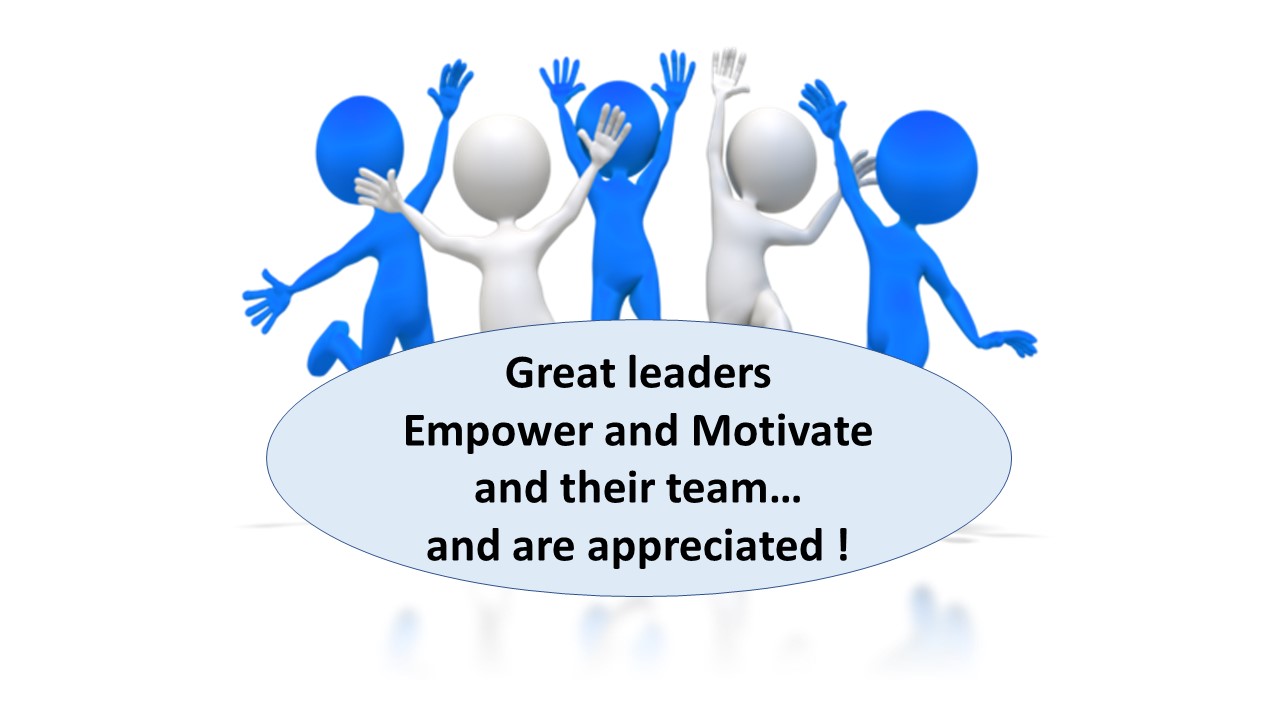By Thomas Davis, CRNA, MAE, Lt. Col. (ret)
Follow @procrnatom on Twitter
The distinction of being a great boss is a recognition that you cannot give to yourself; however, members of your team are constantly observing your behavior, judging you through their eyes and are the ones to bestow the honor when appropriate. Those whom you supervise may not be able to name your leadership style, but they know first hand how it affects them on a personal level. When you connect with your team in a way that conveys respect and promotes the development of each member, they take note and respond in kind. For example, the heartfelt accolades that my recent patient gave to her boss.
While waiting for an overbooked doctor to arrive and start a procedure, I passed the time talking with my stressed patient in hope that pleasant conversation would allay her anxiety. She told me about her work at a restaurant and then mentioned that she worked for the most fantastic boss that she could imagine; “She is so amazing that I would do anything that she asked.” “What makes her a great boss?” I asked. Grateful for the distraction and eager to reply, the patient enthusiastically answered with details. “She likes me as a person, wants me to do well, and she shows me a better way of doing things without criticizing me or complaining. She listens to me and wants me to be the best I can be.” Wow, under stress and on delay, my patient gave a great tribute to a person who is not only a boss but clearly changes the lives of people on her team.
The killer testimonial that my patient gave regarding her awesome boss mirrors the theme found in leadership/management books and journals. In The 5 levels of Leadership, Maxwell (2011) states that level 1 leadership is conveyed with a title that identifies the individual as the boss but carries no clout beyond the title. Level 2 leadership is dynamic and builds upon an essential connection between an engaged boss and willing workers. In level 2 leadership, workers trust the inspiring leader and, therefore, they want to perform at a high level. Maxwell reinforces the importance of one- on-one bonding between the leader and each team member by stating that at level two, “…people follow because they want to and not because they must.” Being connected by having a sincere concern for personal and professional growth of team members creates a bond that elevates trust and loyalty. My patient and her boss could be poster children for the maxim of Level 2 leadership; being mutually committed to one another works for them and it will produce a mindblowing transformation of your workplace when you follow their example.
Naturally outgoing people connect easily but where do people with a more reserved personality start? The answer is simple; you start by making a commitment, learning simple techniques and then jumping in and gaining experience. Building a viable link between yourself and your team requires spending time each day interacting with people and, validating them by practiced listening. In an article, Did you know there are 5 levels of listening? author Derek Gaunt implores the reader to move beyond listening as a means to prepare a rebuttal to the other person; rather, train yourself to listen to understand both the meaning and the emotion behind what you hearing.
Make a commitment to do the following for 30 days and marvel at the response that you will receive from your team.
- Have a positive presence. Make your team a priority and block space on your calendar to spend a minimum of 1 hour per day in casual interaction with your team. A cheerful attitude and a sincere desire to learn about the personal and professional goals of everyone sends the message that you care about more than simply getting the job done. Investing time in your awesome team delivers a persuasive message that each person is valued not only for their work but also for who they are as individuals. As you gain a greater understanding about what motivates each team member, you are able to develop a valuable plan for professional development that will help each person meet his goals.
- Learn to listen. In a hectic workplace it is easy to have your mind on other issues while listening to people and only get the gist rather than the full message that they are trying to deliver. It is also common to feel as if you must defend the status quo and prepare a rebuttal while the other person is talking. Effective listening requires that you leave your defensive position and focus on the other person, listen carefully, and actively seek more information. Rather than digging in your heels, prepare a follow-on question that will encourage the person to disclose more details and increase your depth of understanding what they are saying; “Tell me more about…”, “What next?”, “What is your desired outcome?”, “If you were in charge, what would you do?” are all responses that show your interest and encourage the person to continue talking.
Like my patient’s boss, you can inspire productivity while transforming the lives of those you supervise by connecting, listening and empowering. Transforming your leadership style and earning the “amazing boss” recognition described by my patient is neither a daunting task nor a natural talent. It is a behavior that can be learned. The process involves using the tested theory of spending time with your team and actively listening to their thoughts to learn what makes them tick. Set Level 2 Leadership as a goal and start by committing to a 30-day journey to an empowered and collaborative workplace.
Maxwell, J.C. (2011). The 5 levels of leadership. New York, NY: Hachette Book Group. ISBN
978-1-59995-365-6
Gaunt, D. (2018) https://blog.blackswanltd.com/the-edge/did-you-know-there-are-4-levels-of-listening
Thomas Davis is a noted leader, educator, speaker and clinical anesthetist.
